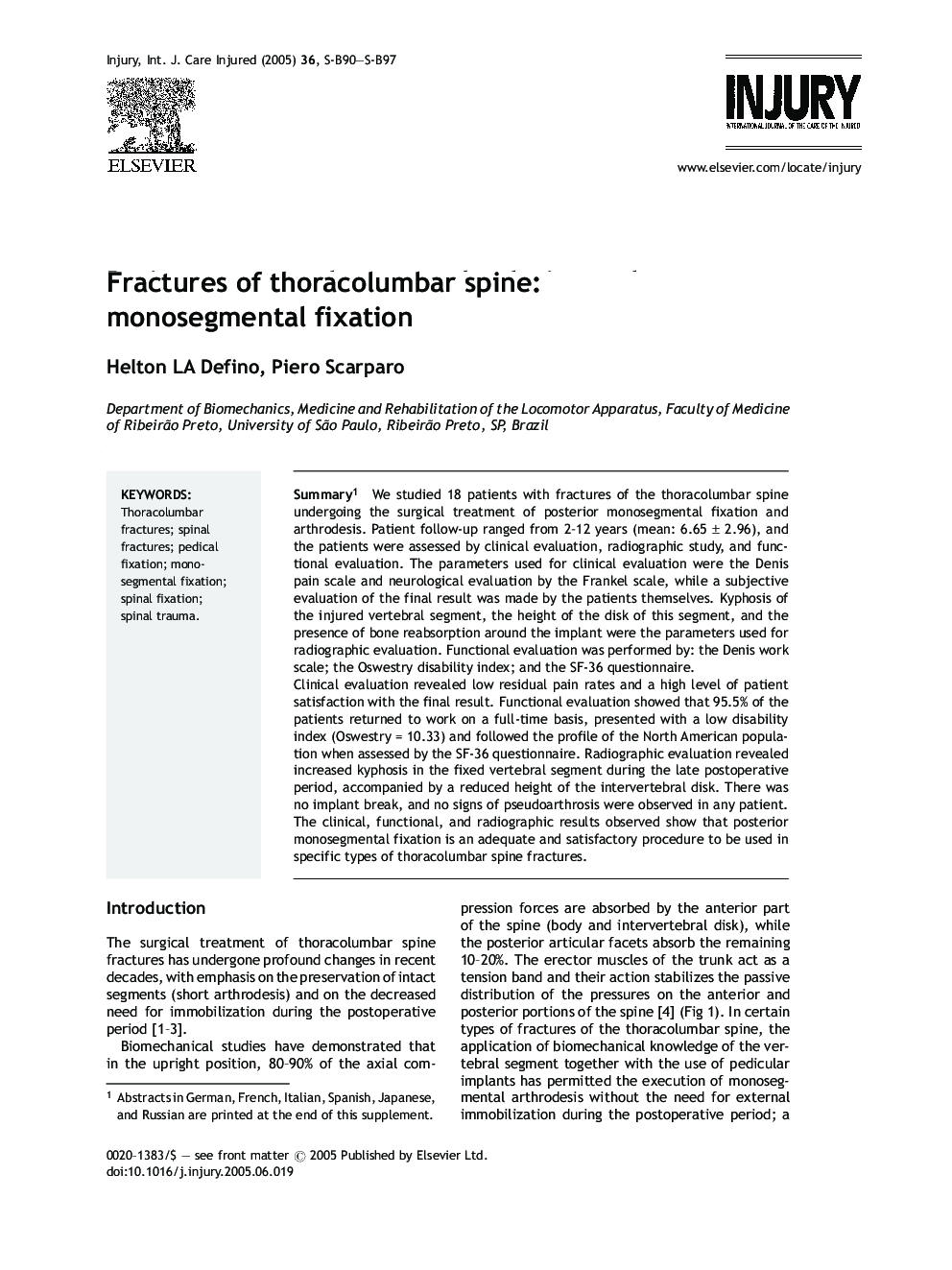| Article ID | Journal | Published Year | Pages | File Type |
|---|---|---|---|---|
| 9234494 | Injury | 2005 | 8 Pages |
Abstract
Clinical evaluation revealed low residual pain rates and a high level of patient satisfaction with the final result. Functional evaluation showed that 95.5% of the patients returned to work on a full-time basis, presented with a low disability index (Oswestry = 10.33) and followed the profile of the North American population when assessed by the SF-36 questionnaire. Radiographic evaluation revealed increased kyphosis in the fixed vertebral segment during the late postoperative period, accompanied by a reduced height of the intervertebral disk. There was no implant break, and no signs of pseudoarthrosis were observed in any patient. The clinical, functional, and radiographic results observed show that posterior monosegmental fixation is an adequate and satisfactory procedure to be used in specific types of thoracolumbar spine fractures.
Related Topics
Health Sciences
Medicine and Dentistry
Emergency Medicine
Authors
Helton LA Defino, Piero Scarparo,
